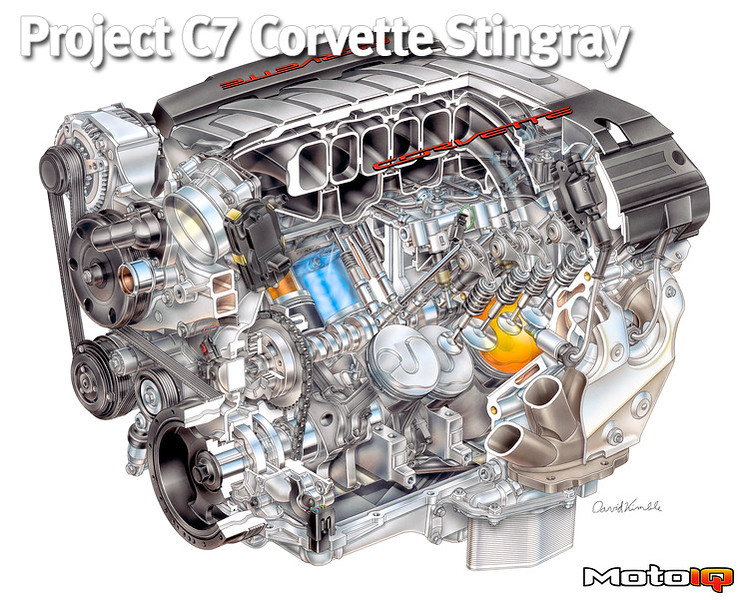
Project C7 Corvette Stingray: Introduction Part 2, A Closer Look at the LT1 Engine
In the last edition of Project C7 Corvette Stingray, we were doing an overall look at the car including it's mostly all new LT1 engine. As we were saying, although the LT and LS share the same architecture, they are indeed very different engines. They are so different that they only share a handful of parts.
The LT1 is a vastly different engine that has a lot of development differences over the already excellent LS3 engine and deserves a closer look at some of its unique internals. Most of the differences are to improve fuel economy, emissions, torque and powerband width, but there are are some tweaks to make more power overall as well.
Of course, you are probably interested in more than what the typical press release info about the LT1, so let's take a look inside of it!

The engineers at Chevrolet have been hard at work to improve this system much to our joy, and the LT1 has a bunch of things to address this issue. The first change is a greatly improved oil pan with extensive baffling and a sump designed to keep oil around the pump pickup.

 The standard LT1 uses a pretty sophisticated variable volume oil pump. It pumps a lower volume at light throttle loads to reduce the engine's frictional pumping losses, but it ramps up volume and pressure at high rpm and high loads.
The standard LT1 uses a pretty sophisticated variable volume oil pump. It pumps a lower volume at light throttle loads to reduce the engine's frictional pumping losses, but it ramps up volume and pressure at high rpm and high loads.


